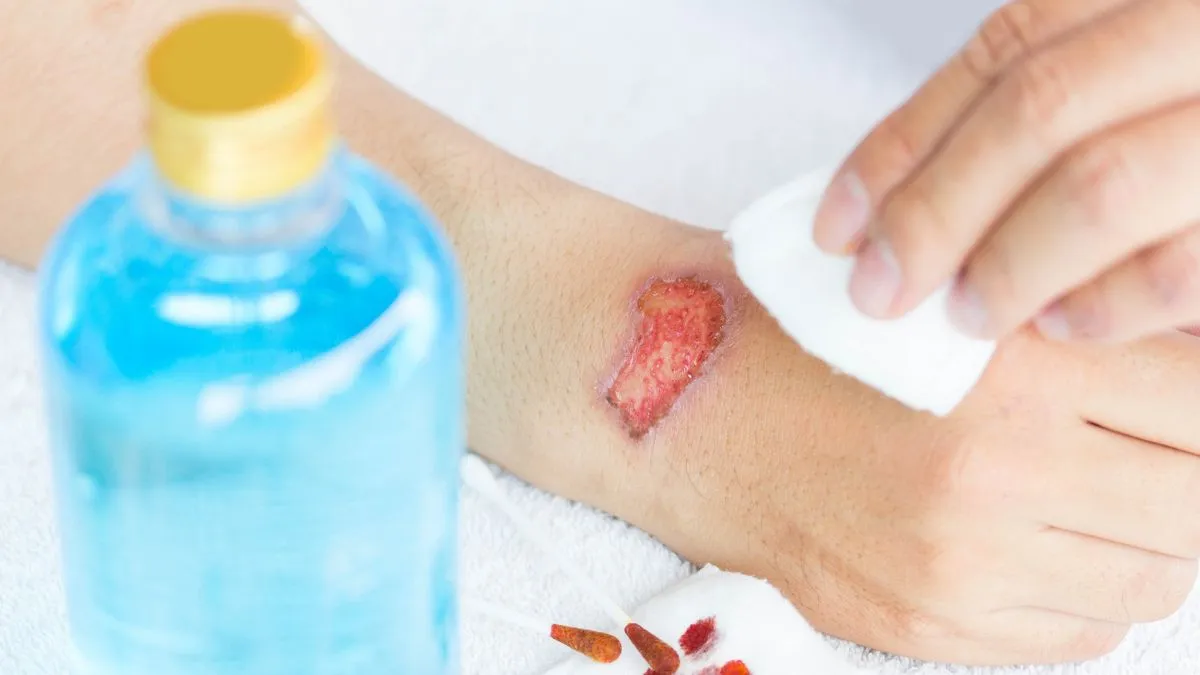
Growing up, most of us reached out to Dettol as the go-to solution for cleansing wounds and preventing infections. Even today, an antiseptic formula like Dettol is always there in our first-aid kit. Having trusted the brand for decades, it is not easy for us to believe if someone points out its efficacy and safety. Recently, during a podcast with a content creator, a dermatologist claimed that ‘Dettol is not safe to be applied on the skin, especially wounds’. This has created a buzz all over the internet and with people questioning, we decided to bring forth the truth about the antiseptic brand.
Dettol is one of the most widely recognised brands in the world, trusted for almost 90 years for its ability to kill germs and maintain hygiene. The antiseptic liquid is a staple product for wound cleaning to potentially halt infection in the wound. However, Dr Manjot Marwah, during a conversation with podcaster Raj Shamani claimed that Dettol can do more harm than good when applied directly to the wound. Instead, it must be cleaned with water.
Is Dettol Safe?
Soon after the video went viral, people including doctors and health experts are showing their disagreement on this statement. The parent company, Reckitt Benckiser India, in an official statement has assured that Dettol is a safe-to-use product and adheres to safety protocols and is approved by FDA.
Also Read: Know The Difference Between Antiseptic And Disinfectant And Their Uses
What is Dettol Made Of?
The primary active ingredient in Dettol antiseptic liquid is Chloroxylenol (C8H9ClO), which is a chemical that contains antibacterial, antifungal, and antiviral properties. As per a study published in the International Journal of Environmental Research and Public Health (2019), products containing Chloroxylenol, like Dettol, are effective against Staphylococcus aureus, E. coli, and Candida albicans, making them suitable for disinfecting skin and surfaces.
The World Health Organization also lists Chloroxylenol as an acceptable ingredient in antiseptics used for minor wounds and first aid.
According to Toxnet (U.S. National Library of Medicine), Chloroxylenol has a low level of toxicity when used externally. This chemical is not meant to be ingested or used in the eyes and/or deep wounds.
Also Read: First Aid Tips To Manage A Cut At Home
How to Use Dettol Properly
Here are some safe usage guidelines for antiseptic liquids:
- Dilute properly: When using on cleaning cuts and wounds or for bathing, dilute dettol before using. Generally, it should be 1 cap of dettol in 1 litre of water.
- Avoid mixing with other cleaners: When using dettol for sanitising the surfaces, do not mix it with any other cleaning product as it may release harmful chemical fumes.
- Avoid overuse: This should be used in moderation on the skin. Regular use of antiseptics and disinfectants on the skin can cause irritation and may lead to serious problems over time.
Also watch this video
Read Next
Tahira Kashyap Reveals Her Breast Cancer Relapse After 7 Years: Expert Shares The Possible Reasons
How we keep this article up to date:
We work with experts and keep a close eye on the latest in health and wellness. Whenever there is a new research or helpful information, we update our articles with accurate and useful advice.
Current Version